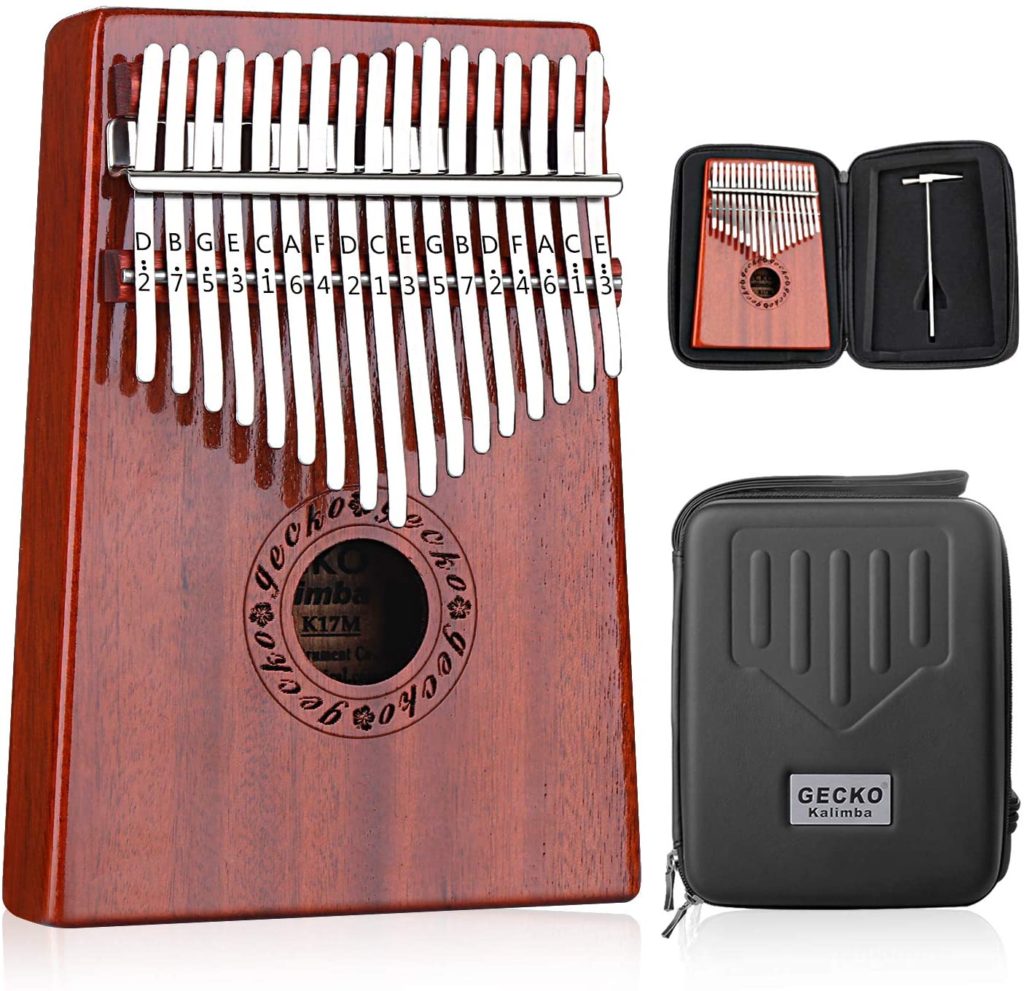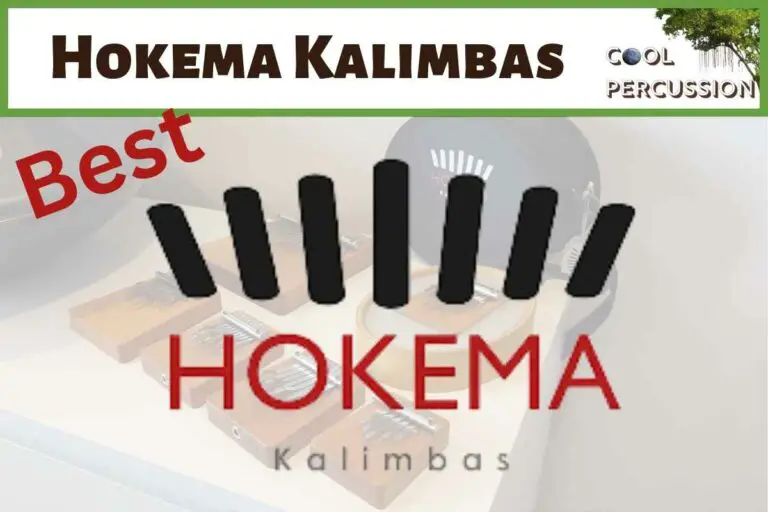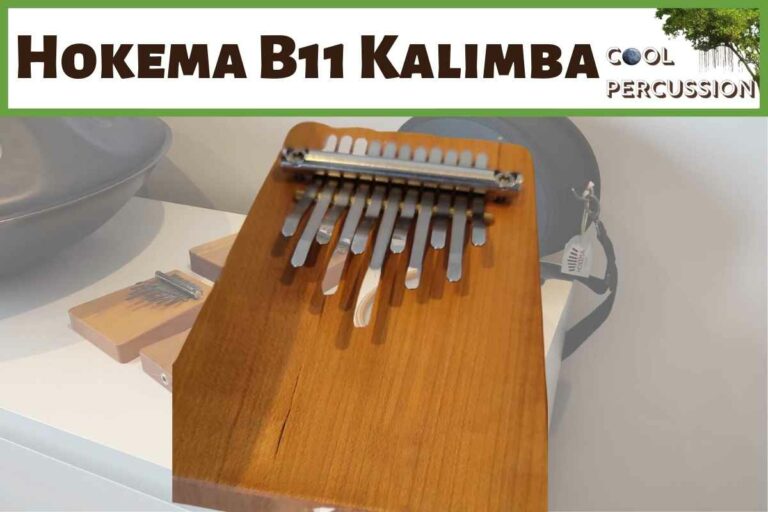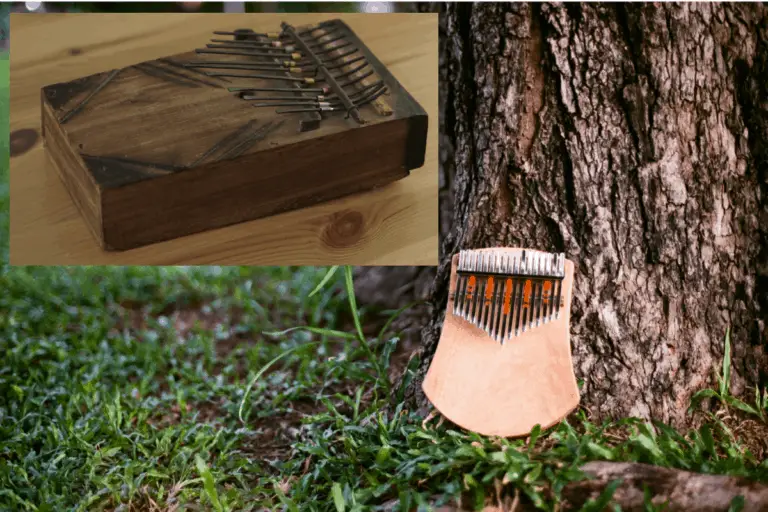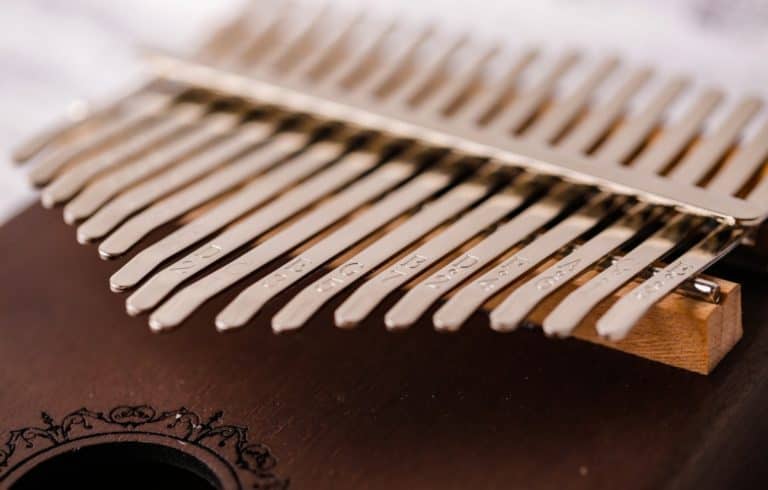[Guide] Which Kalimba? – Buying Tips you Need to Know – Money Saving
This Kalimba Buying Guide is going to help you save money with some tips you need to know before you make your final buying choice.
Before you order your first Kalimba instrument consider these money-saving tips essential to prevent you from spending more than you need and from having to replace a bad kalimba that you bought cheaply, meaning you spend more than you should.
What you need to know before you buy a Kalimba.
The Kalimba is a simple looking instrument that is easy to begin to play but a little harder to master. Ensuring you have a good Kalimba will very much help you in learning to play Kalimba so here I have some tips on what to look for when buying your first Kalimba instrument.
My Favourite Kalimbas for Beginners
I own quite a few Kalimbas of differing sizes, keys, styles, and prices. I was somewhat addicted for a while! Anyway, having gone through quite a few when I first started getting interested, I have a couple of recommendations for you, if you are looking to buy your first, so you can try one out inexpensively and see if you want to take things further
Chances are, you’ll stick with one of these as you can learn and grow with them, which is why I’ve picked them out
Gecko Kalimba
This was the first-ever Kalimba I bought and it is the one I use the most today.
Because it is so gorgeous looking, I have mine on display in the office.
Hluru Board Kalimba
One thing that you might be slightly surprised about is that you can gain a richer sound from the board kalimba as opposed to the Box.
They are also a little easier to play if you do not have big hands because the depth is much shallower
Kalimba Buying Tips
- Choose a Wooden Kalimba
- Sound Hole or not?
- Buy a Mid-Range Quality Kalimba
- Know what a good Kalimba Sounds Like
- Grow Your Thumbnails
1. Choose a Wooden Kalimba
It is possible to buy Kalimbas on Wood or Acrylic bases.
The advice here is to stick with wood for your first Kalimba. Plastic or Acrylic Kalimbas can be very good, but there is little that matches the resonance and general ‘feel’ of a wooden instrument.
2. Sound Hole or Solid Base?
You can buy great kalimbas with or without sound-holes, so this choice is going to come down to personal preference and look.
Kalimba With Sound Hole
The benefit of Kalimba with a sound hole is that the space is used for modulating the sound. With additional holes on the rear of the kalimba that can be accessed with your ring or little fingers, you can increase and decrease the volume coming out of the hole on the front.
This also gives you the ability to affect note by note the sound you kalimba makes and is a great additional for e personally.
The sound is naturally amplified in the chamber created by the box design, and with practice and once skilled you can create vibratos with rapid to and fro movement of your fingers near the rear sound holes
Solid base Kalimba
There is obvioulsy no sound modulation with board mounted Kalimbas, but they are a great deal more sturdy then box types thanks to the more solid construction.
If you are prone to dropping things or are buying a kalimba for a child, then a solid base Kalimba is probably your best bet.
3. Buy a Mid Price Range Kalimba
You are almost certainly reading these Kalimba buying tips because you are researching and embarking on buying a Kalimba for the first time. Probably one of the most important tips in this guide, is to choose a mid-range priced instrument.
Buying Cheap Kalimbas
When you buy cheap kalimbas, and I am talking about instruments in the less than $25 range, you are in almost all cases, going to receive a Kalimba made with poor quality materials.
This will have an effect on the resonance of the tines, how long the tines will last after being played a lot. (Beginners tend to play a lot!)
But moreover, the kalimba is not going to sound the best it could even if you are playing the instrument absolutely perfectly.
This could lead to you questioning your ability to play Kalimba well and give up, hen in fact a better-priced Kalimba would have sounded much better, and you would have been encouraged to continue learning and improving your technique and playing skills.
Buying Expensive Kalimbas
It is possible to spend a great deal of money on buying a Kalimba and there is certainly a place for them in the market. However, if you are considering your fist kalimba then I would suggest that you would not get full value from one of these.
A mid-range Price Kalimba is going to suit you perfectly, especially if you have little to no previous musical instrument experience. The value you ill get from paying those extra $100 on a Kalimba will only come when your technique and ear for the music is such that you can appreciate ad value the nuances of better quality materials and higher price tags.
The exception here is if you are buying your first Kalimba but have extensive musical experience with other instruments. In this case, one might expect that you would progress your learning at a much faster pace and be able to hear and value the difference in quality of sound, resonance, and tone of the instrument.
4. Know What a good Kalimba Should Sound Like
It is important to understand what your Kalimba should sound like when you recieve, it, take it from the box and play if for the first time.
If you are not aware you could have poor sounding tines, or worse still, buzzing tines, or dead tines and not even be aware.
Each and every tine on your kalimba should be able to be heard clearly and resonate. Dead tines or buzzing will affect the overall sound performance of your instrument.
If your Kalimba doesn’t sound as good as it should, you may begin to think you are not able to play so well and lose motivation to learn further, and this would be a wasted opportunity as I am sure you can become a great Kalimba player in a very short time.
5. Grow Your Thumbnails
It is not essential to have long nails on your thumbs to play the thumb piano, but it can help at the stage when you first start learnign and are picking up the basic technique
Having long thumbnails that allow you to pluck the notes with the nail instead of the end of your thumb will be much easier.
In time, as your technique improves you can return to having shorter thumbnails if you prefer, although many kalimba players, once experienced, will keep their thumbnails, not too long, so they can play with either the nail or the end of the thumb for a softer sound.
Subjective Tips for buying Kalimba
Some choices you make when you buy a Kalimba will be personal preference that can’t be accounted for in this Kalimba Buying guide.
Stick the guide above but when it comes to the choices below, it really is up to you, how you go.
Choose the Kalimba you want
Once you have applied the tow tips above which really leves you with a big range of kalimbas to choose from, it is up to you how many notes your Kalimba will have, what wood is used, what color it may be, or how much it may cost.
If you want a Kalimba because it is a specific shape, then that is the instrument for you.
The Kalimba buying tips above are as a guide, they are not suggesting you buy a single particular instrument.
Each kalimba is very personal to you, and if you do not like the look, the feel, or the volor of your instrument, you are not going to have as much fun as you potentially cold in learnig it.
- Choose the wood you want
- Choose the Color you want
- Choose the shape you want
- Have Fun
Choose the Kalimba you Can Afford
If you are buying your first Kalimba, as discussed, you should neither buy a kalimba that is very cheap, nor on that is very expensive.
What price is an expensive Kalimba?
Anything around or over $100 could be considered an expensive Kalimba, although, for around that price, you can afford a Hugh Tacey instrument which will play beautifully.
Anything over $60 may also be considered expensive, and you will find a perfectly good Kalimba in that price range for your first instrument.
Of course, cost is subjctive to your financial situation and $100 may be expensive to one person whilst not to another.
The fact is, you can get very good Kalimbas for much less than $100 that sounds great, but once your experience grows as a musician or kalimba player, you may want to scale up to the top end of the price range to ‘enjoy’ the additional build quality and materials used.

